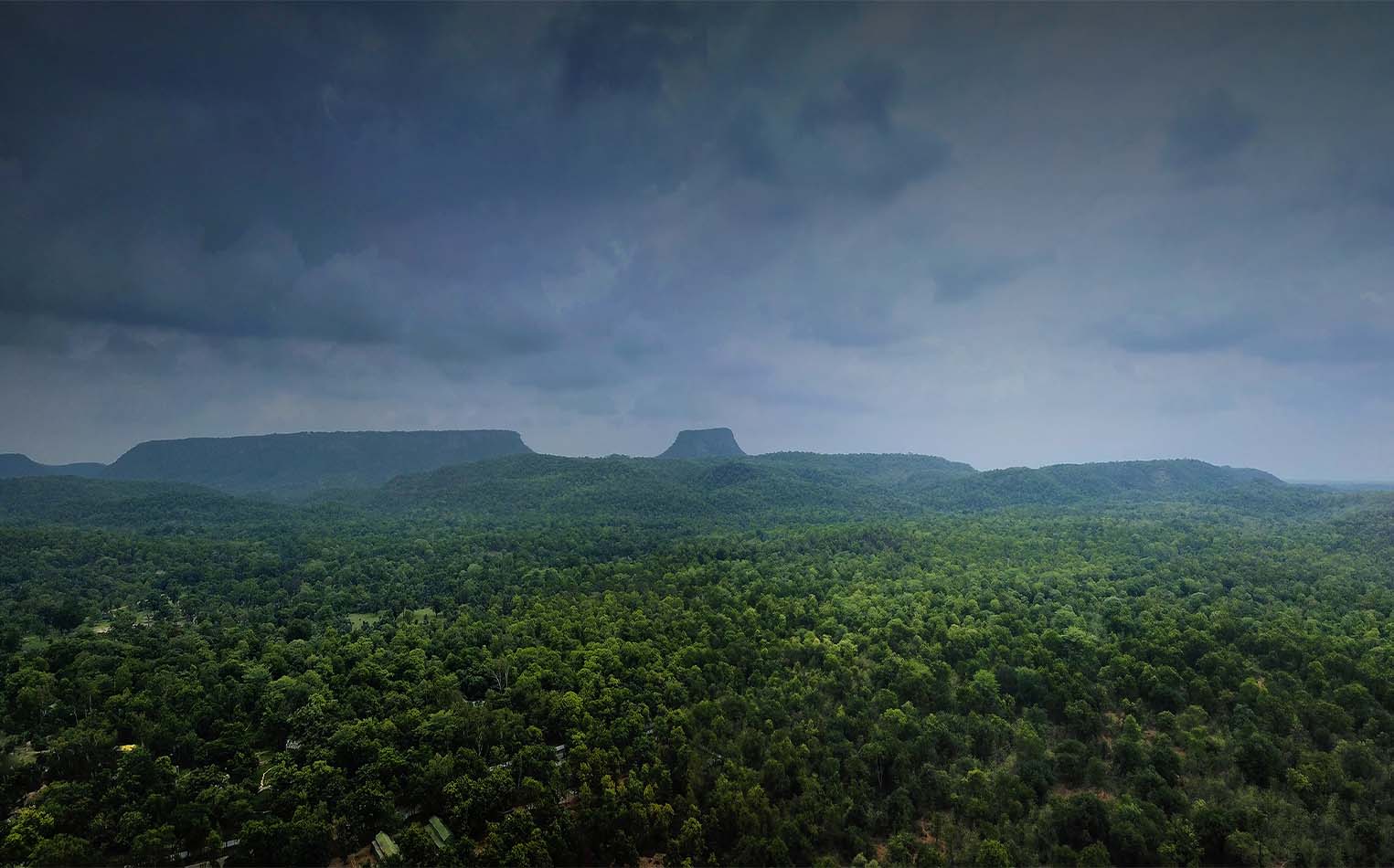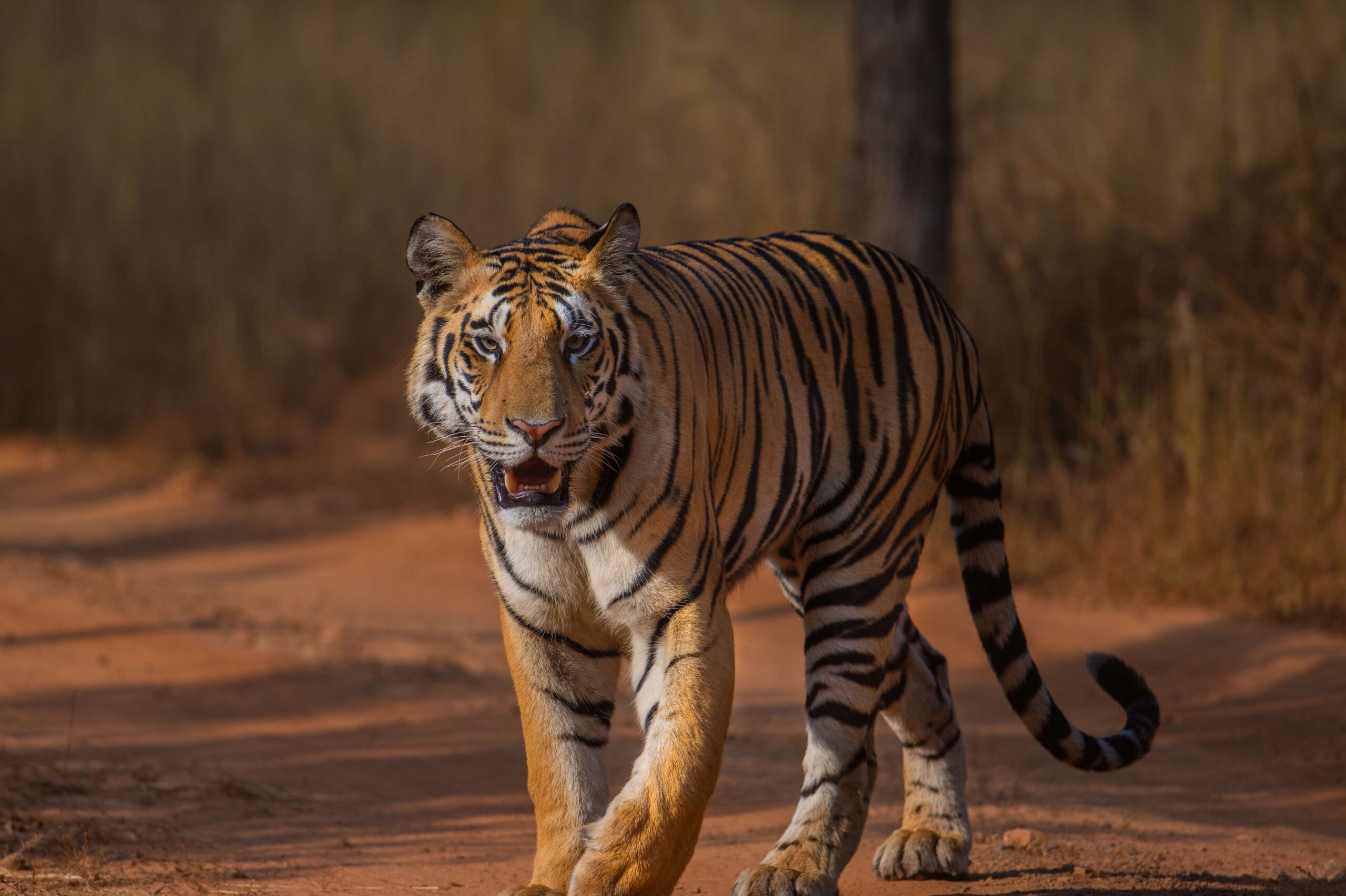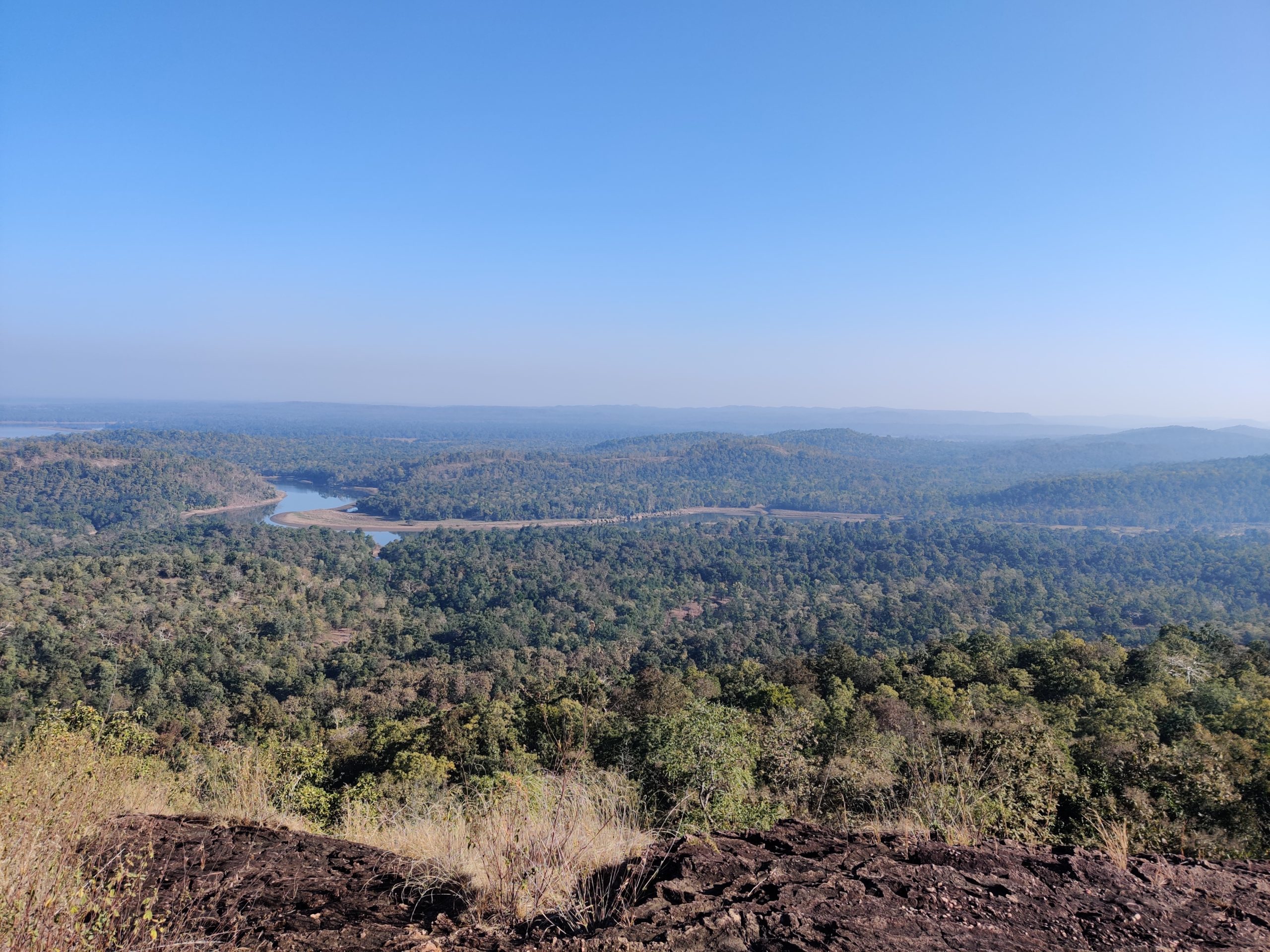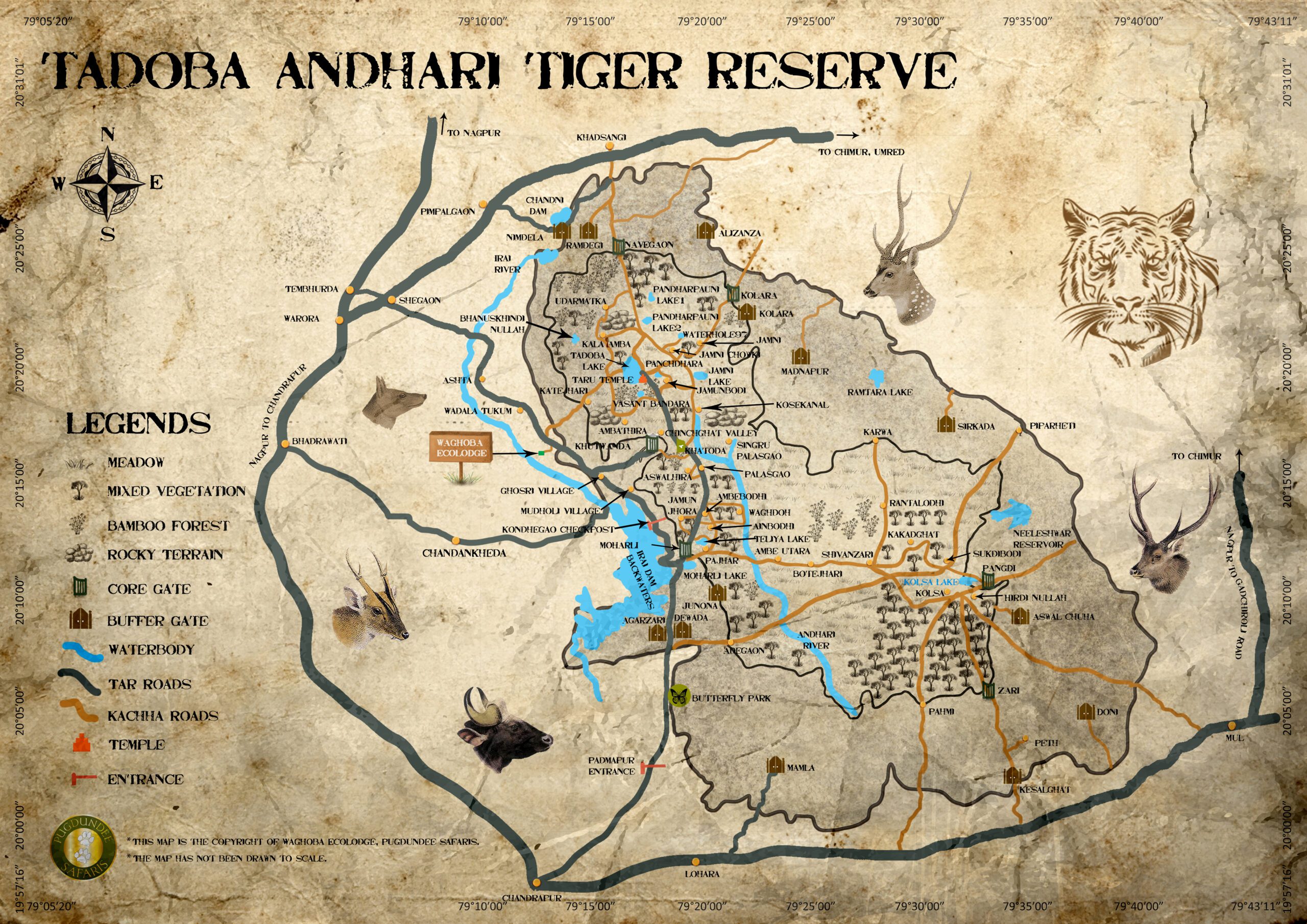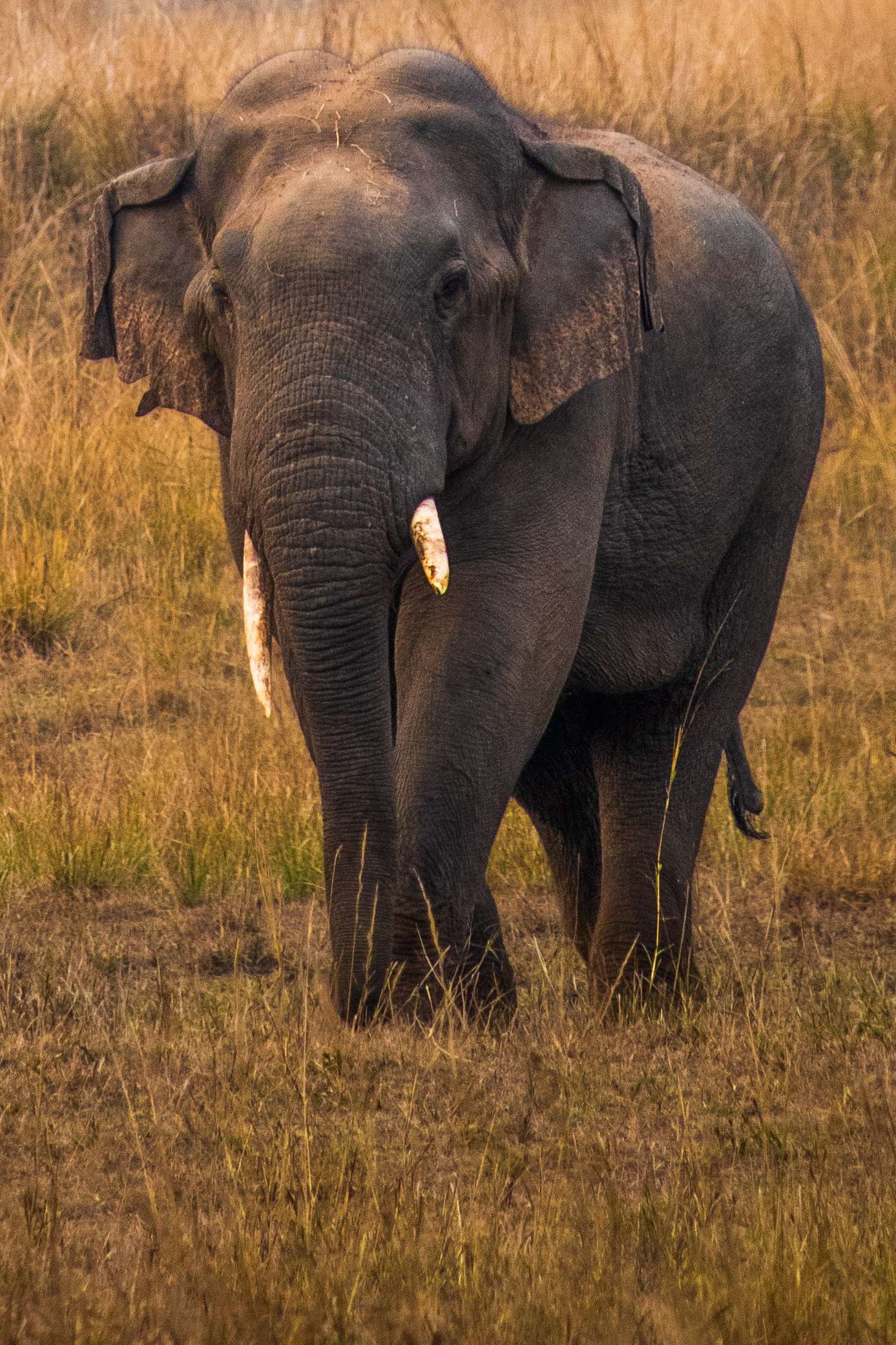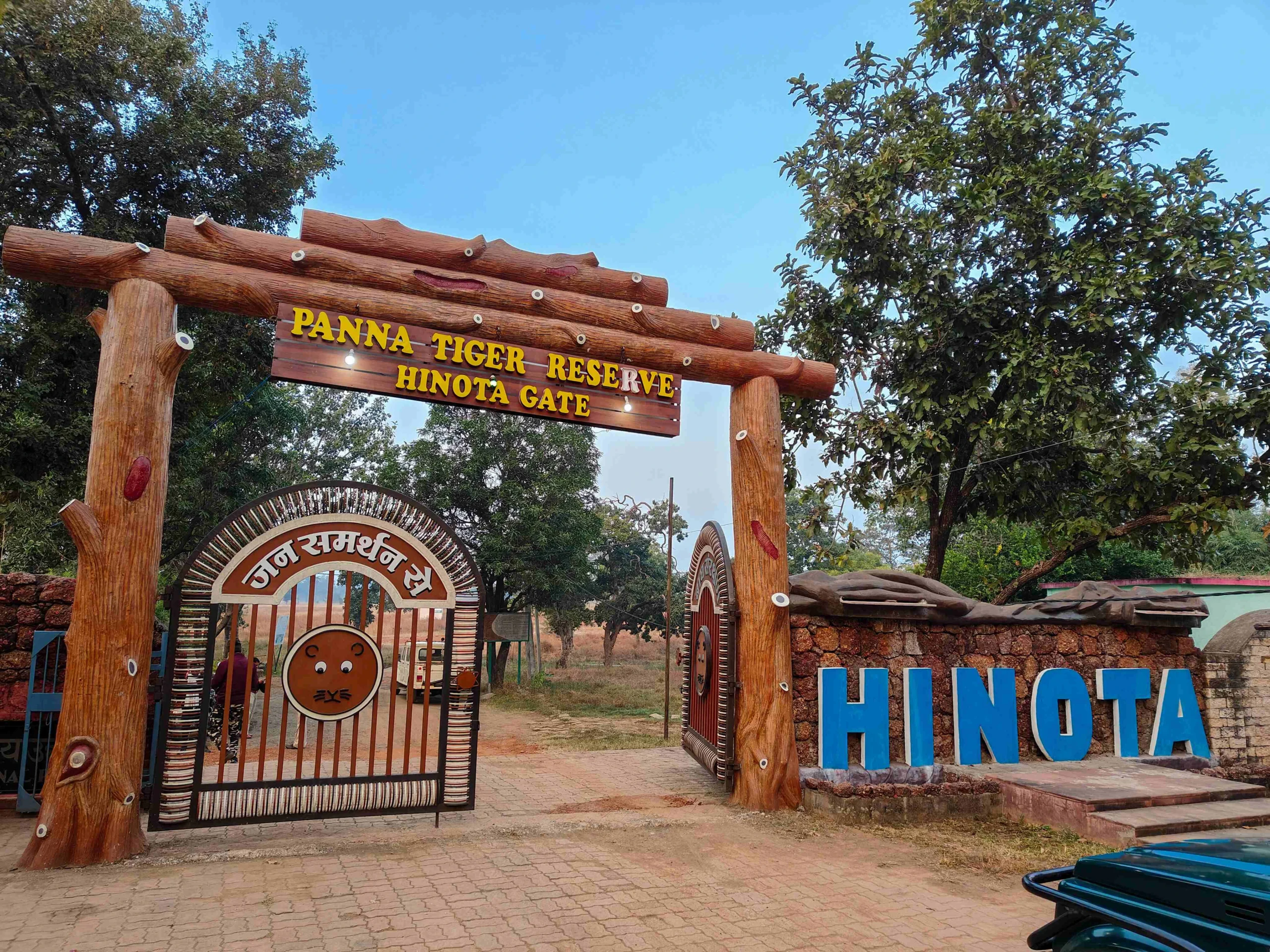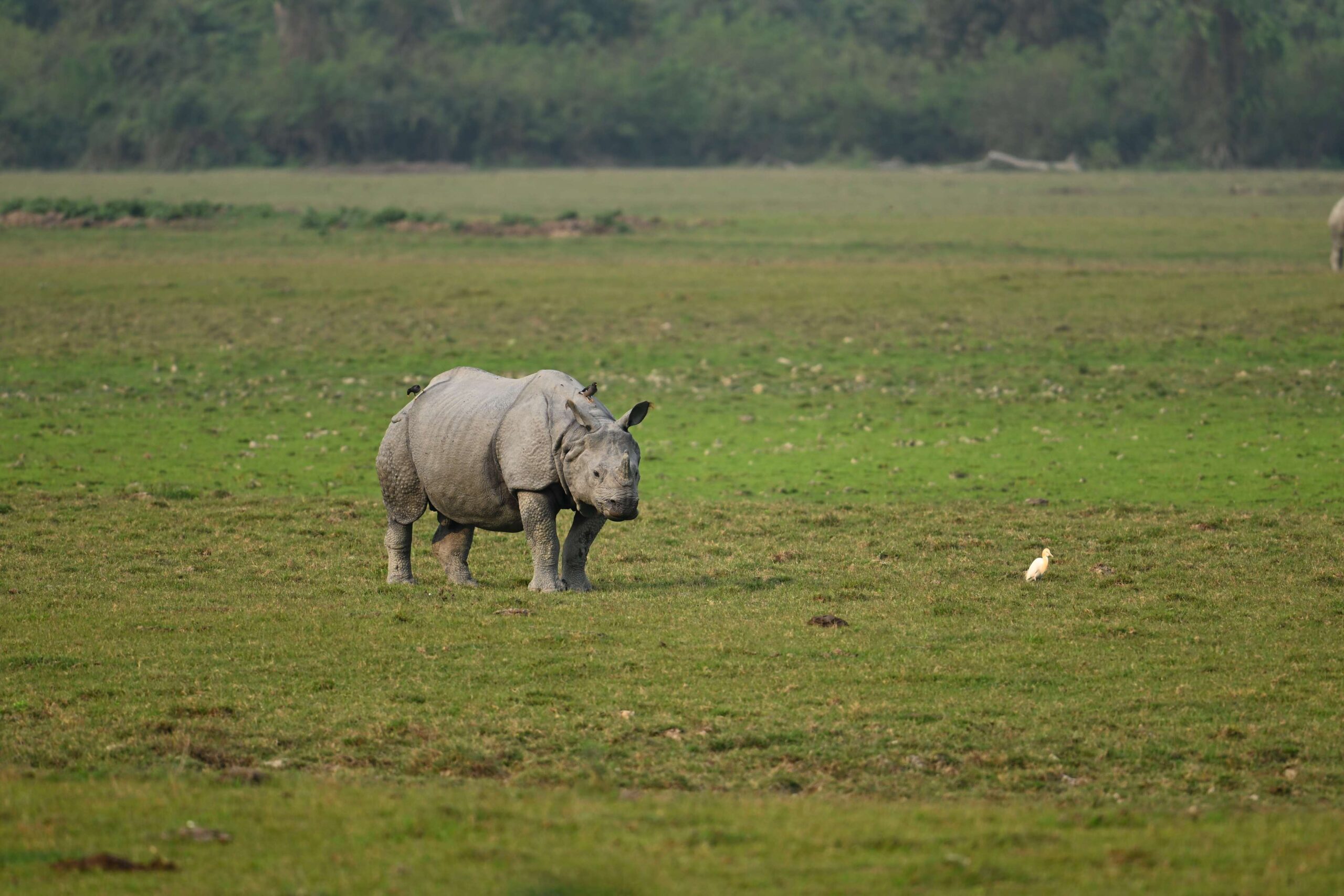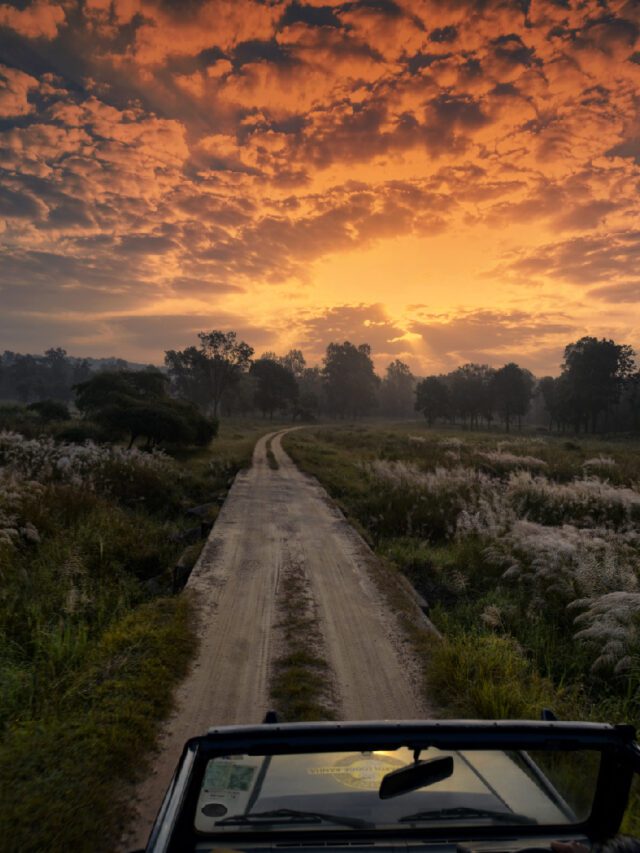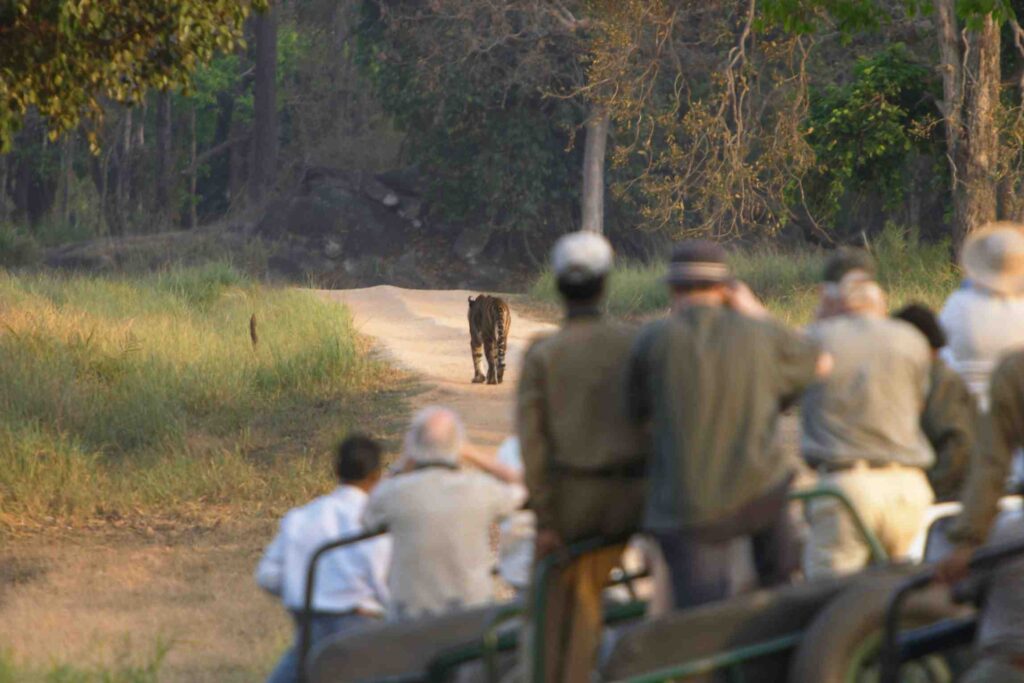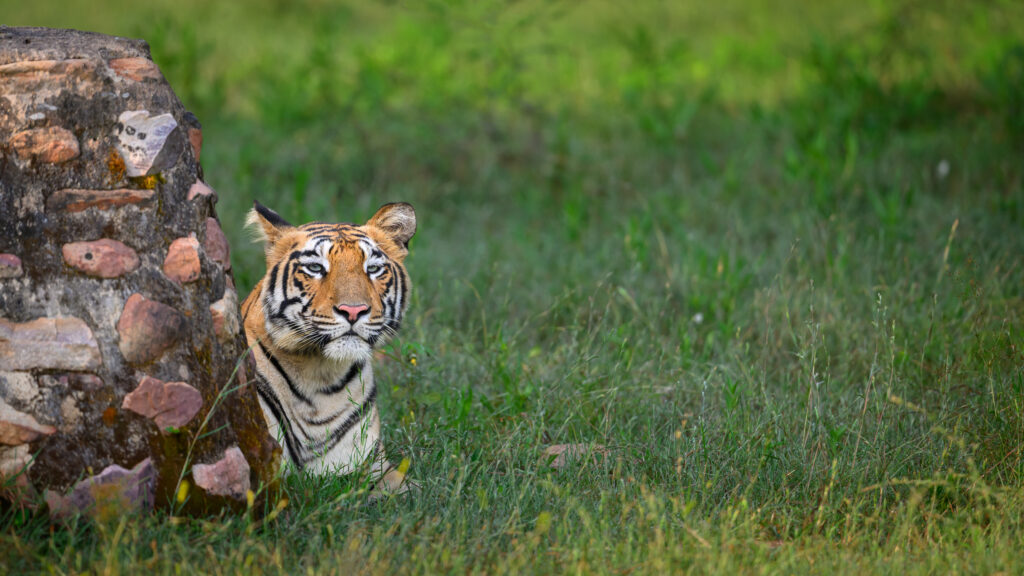Why Choose Jungle Safari in India?
India boasts 106 national parks and 573 wildlife sanctuaries. It is home to more than 70% of the world’s wild tiger population, unique flora and fauna including over 1,300 bird species. Its diverse topography offers everything from dense sal and bamboo forests to grasslands, wetlands to riverine ecosystems. Whether you’re looking for a luxury wildlife holiday or an offbeat forest retreat, India delivers one of the most diverse and accessible wildlife experiences in the world. In this comprehensive jungle safari guide, we’ll walk you through the best parks, when to go, what to pack, and how to plan responsibly.
Best National Parks to visit for a Jungle Safari in India
Below we have curated a list of India’s top national parks that are ideal for a jungle safari:
1. Bandhavgarh National Park, Madhya Pradesh
Why Go: Known for one of the highest density of tigers in India and spread across a sprawling area of 1536 sqkm, Bandhavgarh is one of the best places to spot tigers. It offers striking landscapes dotted with steep cliffs, dense sal forests, and the ancient Bandhavgarh Fort – making it a top choice for wildlife photographers and history buffs alike.
Animals in Bandhavgarh: Bengal tiger, leopard, sloth bear, sambar deer, Indian gaur.
How to Reach Bandhavgarh: The closest airport to Bandhavgarh is Jabalpur, which is 3.5 hours by road, while Khajuraho is 5 hours away, but makes for a great option for history and culture enthusiasts who can visit the Khajuraho temples – a UNESCO World Heritage Site. Umaria is the closest railway station from Bandhavgarh (1 hour away), and one can charter a private plane from the Umaria airstrip. Katni is a major station that is well connected to major cities (2 hours away) and Jabalpur station is also a viable option (4 hours away).
Also Read: 7 Facts About Bandhavgarh
2. Kanha National Park, Madhya Pradesh
Why Go: Kanha Tiger Reserve features beautiful meadows and expansive sal and bamboo forests, which inspired Rudyard Kipling’s The Jungle Book. Kanha is a model for successful conservation, especially with the revival of the hard-ground barasingha.
Animals in Kanha: Barasingha (hard-ground swamp deer), tigers, leopards, wild dogs.
How to Reach Kanha: The nearest airports are Jabalpur (4 hours away), Raipur (5 hours away), and Nagpur (5 hours away). One can also choose to travel by train; suitable stations include Jabalpur, Gondia, Nagpur, Raipur and Katni junctions.
Also Read: Best Gates in Kanha National Park
3. Pench National Park, Madhya Pradesh & Maharashtra
Why Go: A scenic and less-crowded national park, Pench is often thought to be the forest where The Jungle Book is set. Its teak forests and open grasslands are known for birding and frequent tiger and leopard sightings.
Animals in Pench: Tigers, leopards, wild dogs, spotted deer, over 200 bird species.
How to Reach Pench: The closest airport is Nagpur (2 hours by road).
4. Satpura National Park, Madhya Pradesh
Why Go: Satpura is a hidden gem ideal for those who enjoy exploring the forest through various non-motor options like walking safaris, canoe rides and river safaris, and peaceful forest stays. This is the only park in Central India that offers walking safaris with camping overnight in luxury tents, which allows guests to experience the forest in a more intimate way.
Animals in Satpura: Sloth bears, leopards, wild dogs, malabar squirrels, marsh crocodiles and tigers.
How to Reach Satpura: Bhopal airport is around 3 hours away, while Nagpur airport is 6.5 hours from Satpura Tiger Reserve. The closest railheads include Piparia (40 km), Sohagpur (20 km), Itarsi (70 km), Bhopal (140 km), and Nagpur (320 km).
Also Read: Best zones in Satpura National Park
5. Ranthambore National Park, Rajasthan
Why Go: Ranthambore is one of the most popular parks due to its landscape dotted with dry deciduous forest, rocky hills and lakes. Tigers can often be spotted in dramatic settings around ancient ruins, making it a photographer’s dream. It also houses several ancient temples and the 10th century Ranthambore fort – a UNESCO World Heritage Site.
Animals in Ranthambore: Tigers, crocodiles, hyenas, nilgai, leopards.
How to Reach Ranthambore: The nearest airport is Jaipur, which is 3-4 hours by road. Ranthambore is also well connected by train, with Sawai Madhopur being the closest station 11km from the park.
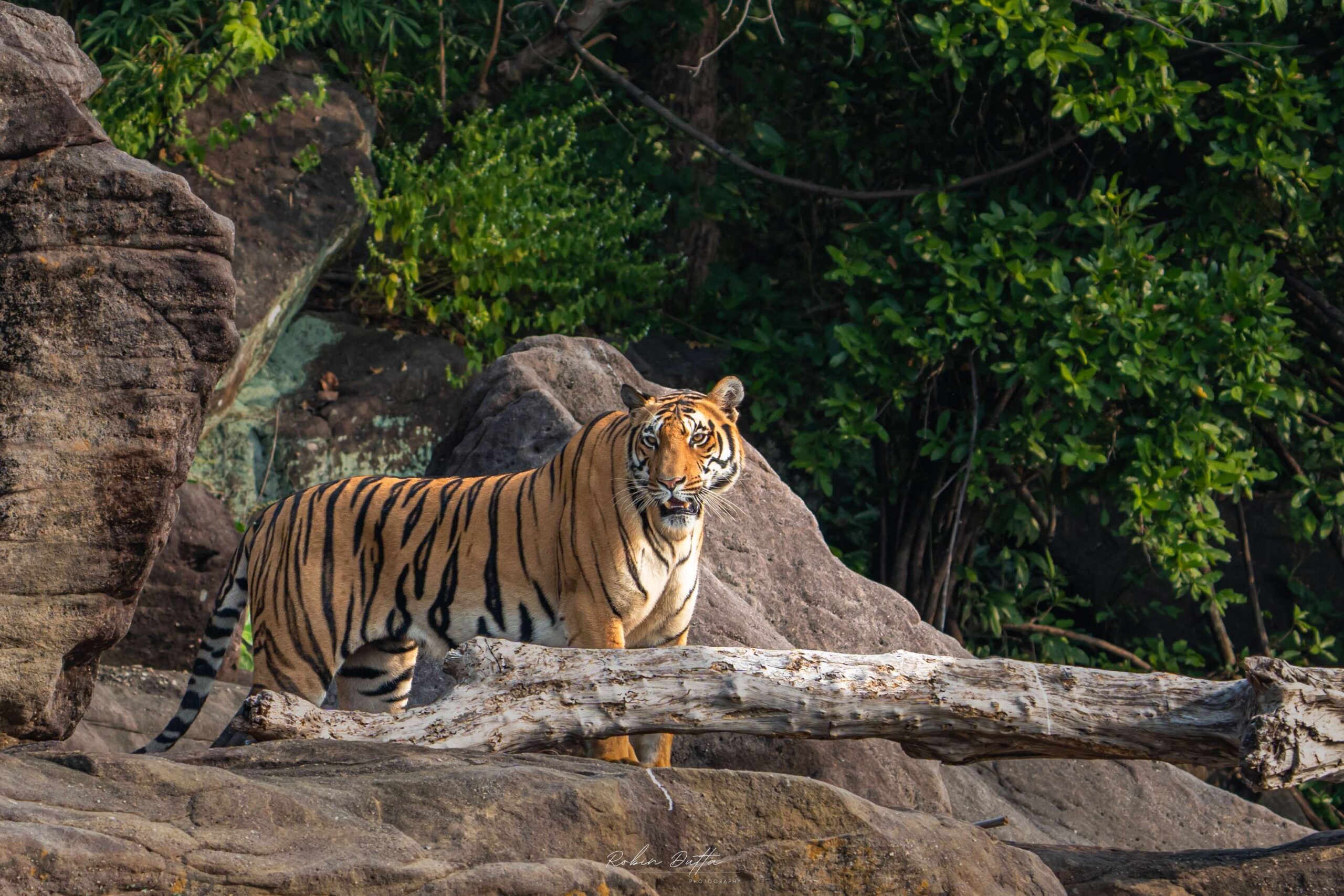 6. Tadoba-Andhari Tiger Reserve, Maharashtra
6. Tadoba-Andhari Tiger Reserve, Maharashtra
Why Go: Open throughout the year, Tadoba-Andhari is Maharashtra’s oldest and largest tiger reserve. This park is a favourite throughout the seasons, with buffer zones open all-year round, and core zones functional from 1st October to 30th June. It offers high chances of tiger sightings and is easily reachable.
Animals in Tadoba: Tigers, leopards, wild dogs, marsh crocodiles, and more.
How to Reach Tadoba-Andhari: Tadoba-Andhari Tiger Reserve is well-connected by air, rail and road. It is 140 km (3 hours away) from the closest international airport in Nagpur. Chandrapur (45 km), Wardha (118 km) and Nagpur (150 km) are the nearest railway stations. It is easily accessible via highways from Mumbai, Nagpur, Chandrapur, Hyderabad, Delhi and several other cities, making it an accessible safari destination in Maharashtra.
7. Jim Corbett National Park, Uttarakhand
Why Go: Established in 1936, Jim Corbett is India’s first national park, set against the backdrop of the Himalayan foothills. This park’s diverse terrain offers a beautiful mix of dense sal forests, open grasslands, and winding rivers, great for birding and tiger sightings.
Animals in Jim Corbett: Tigers, elephants, crocodiles, otters, over 600 bird species.
How to Reach Jim-Corbett: The nearest airport is Pantnagar (2 hours) or one can take a direct train to Ramnagar junction. Delhi has a major international airport and transport hub, and is only five hours by road.
8. Panna National Park, Madhya Pradesh
Why Go: Panna is a serene, less-crowded national park that’s ideal for those seeking solitude and natural beauty. The beautiful Ken River, which carves through gorges and waterfalls, adds a dramatic touch to every safari. Home to the Pandav Caves, Panna is known for its successful tiger reintroduction program.
Animals in Panna: Tigers, leopards, gharial, mugger crocodiles, hyenas, chital, vultures.
How to Reach Panna: The closest airport is Khajuraho (1 hour by road). By rail, Khajuraho and Satna are train junctions one can consider.
9. Kaziranga National Park, Assam
Why Go: A UNESCO World Heritage Site in Assam, Kaziranga National Park is the best place in the world to spot the endangered one-horned rhinoceros. Its vast floodplains formed by the Brahmaputra river, tall elephant grass, and swampy marshlands create a wild, untamed landscape teeming with biodiversity. The park covers an area of approximately 430 square kilometres. Several rivers flow through the area, with large portions of the park getting submerged during the monsoon.
Animals in Kaziranga: Rhinos, tigers, elephants, swamp deer, wild buffalo, otters, capped langurs, hoolock gibbons.
How to Reach Kaziranga: The nearest airports are in Jorhat (2 hours), Dimapur (3.5 hours) and Guwahati (5.5 hours each). The closest railway stations are in Jorhat and Guwahati.
When to Go: Understanding the Seasons
Every season offers a different taste of the forest from wildlife sightings to scenery.
October – February: Cooler weather, lush greenery, great for birds and landscapes.
March – June: While the weather is hot, it is prime season for tiger sightings as animals flock to waterholes and the undergrowth is less, increasing visibility.
July – September: The core zones of most parks are closed due to the monsoon, giving forests a chance to regenerate. Buffer zones of certain parks like Tadoba-Andhari Tiger Reserve offer a great safari experience even through the monsoon months.
For more information on picking the best season for safari, read our guide on The Best Time for Tiger Safaris in India: A Month-by-Month Guide.
What to Pack: Jungle Safari Essentials Checklist
Make your safari trip more comfortable and productive with this checklist:
- ID documents (mandatory when checking permit entry at the park gates)
- Neutral-colored clothing and earthy tones (avoid bright colours in the forest)
- Light jacket, scarf or layers (early mornings and late evenings can get chilly on safari, depending on the season)
- A hat or cap, sunglasses and sunscreen
- Binoculars and camera
- A reusable water bottle (avoid single-use plastic so we can keep our forests pristine)
- Travel journal (optional but rewarding!)
- Books that can help with identifying the creatures you spot like Birds of the Indian Subcontinent by Grimmett, Inskipp and Inskipp, and A Field Guide to Indian Mammals by Vivek Menon
Also Read: Best Places To See Tigers In India For An Ultimate Safari Experience
Tips for Planning a Jungle Safari in India
While the majestic Bengal tiger is often the highlight for safari-goers, the forests are home to over 400 species of mammals and around 1350 species of birds, in addition to numerous reptiles, butterflies, amphibians and more. On a safari through central India’s forests, one might spot larger mammals like leopards, sloth bears, gaur (Indian bison), rhinos, elephants, wild dogs (dhole), hyenas, jackals, barasingha, sambar and spotted deer, langurs and macaques. The forest abounds in birds like Indian rollers, crested serpent eagles, hornbills, owls, and more!
Follow the tips below to maximise the probability of spotting tigers in the wild:
- Permits: Booking for safari slots usually open 120 days before the date, with prime safari season running between October and June. Core zones are in high demand during this time. Book safari permits online well in advance via the state forest department site, or ask your lodge to arrange the same.
- Type of Safari: Jeep safaris are the most immersive, usually shared by up to 6 guests, a driver and a guide. You can also book a private safari through your lodge or safari company. Canter safaris (20-seaters) are cheaper but less flexible. We do not recommend booking elephant safaris as we advocate for ethical wildlife experiences only.
- Naturalists and Experienced Guides: Booking a private jeep safari with an experienced naturalist can elevate your safari experience. Naturalists are skilled in understanding wildlife behaviour, and knowledgeable about the local forest’s flora, fauna, terrain and ecosystems, which can help you take away so much more from your time in the forest, along with increasing chances of sightings.
- Zones: Each park has multiple zones that offer a unique experience depending on the landscape, ecosystem and wildlife that inhabits it. Try to book multiple safaris over a week-long stay across different zones, possibly by combining two national parks if visiting central India. This will offer a varied experience and increase your chances of animal sightings.
Also Read: The Best Time for Tiger Safaris in India: A Month-by-Month Guide
Jungle Safari Rules and Etiquette
Respecting the jungle and its inhabitants is key to an ethical and enjoyable experience, both for guests and the wildlife. Here are some do’s and don’ts in the jungle safari:
Do’s:
- Follow the instructions given by your guide and the forest rules.
- Stay silent during sightings, being mindful of the noise you might make due to excitement. Enjoy the natural sounds of the forest.
- Be patient. Safaris are about the entire experience, not just spotting big cats.
- Tip your guides and drivers appropriately.
Don’ts:
- Don’t play music or speak loudly.
- Don’t wear bright colours, perfume or strong scents.
- Never feed or provoke wildlife, and do not push your guide or driver to go too close to the animals. Maintain a safe and respectful distance when observing wildlife.
- Don’t step out of the vehicle unless allowed.
- No littering. Leave the forest as you found it, by carrying out what you carried in.
Final Thoughts
This guide to jungle safari travel in India gives you a detailed look at where to go, what to expect, and how to do it right. For many, a jungle safari in India is a once-in-a-lifetime adventure — a chance to be in the presence of the wild and witness nature in its purest form.
Whether it’s your first or fifth time in the wild, these reserves offer experiences that are as diverse as the country itself. If you’re specifically interested in spotting the majestic Bengal tiger, consider exploring some of the best Tiger Tours in India that focus on high-density tiger habitats across iconic reserves like Bandhavgarh, Ranthambore, and Kanha.
Plan well, travel mindfully, and go with an open heart. The jungle is calling.
Written by Pooja Kumar
About the Author: Pooja is a nature and wildlife enthusiast who finds joy in exploring the wilderness, whether on safari in the forests or hiking in the hills. As a content writer with Pugdundee Safaris, she draws inspiration from nature to craft stories and poetry that connect the human experience with the beauty of the natural world. Through her writing, she hopes to inspire and educate others about the wonders of wildlife and conservation.

